Quitting a salary of 25 million/month, the engineer returned to his hometown to raise a "multi-eating, regular" child.
Mr. Vu Van Cu's civet farm in Xuan Lam commune, Hung Nguyen district, Nghe An province currently has a scale of 500 breeding civets.
This is one of the largest civet breeding farms in Nghe An province. In 2023, the civet farm's revenue was nearly 1 billion VND.
Clip: Witnessing the farm raising wild animals, the specialty - civet cats of Mr. Vu Van Cu in Xuan Lam commune, Hung Nguyen district, Nghe An province. Production: Canh Thang - Nguyen Tinh
Few people know that the owner of the largest civet breeding farm in Nghe An province used to be a multi-talented engineer.
Mr. Cu has a job and an income that thousands of people dream of. But the construction engineer decided to "change direction" and leave everything behind to return to his hometown to raise civets.
"I studied architecture at university, and after graduating I became an engineer in my major. When I quit my job, my average salary was more than 25 million VND/month.
Therefore, when I decided to quit my job, many people advised me against it. But I still insisted on returning to my hometown to start a business," Mr. Cu shared.
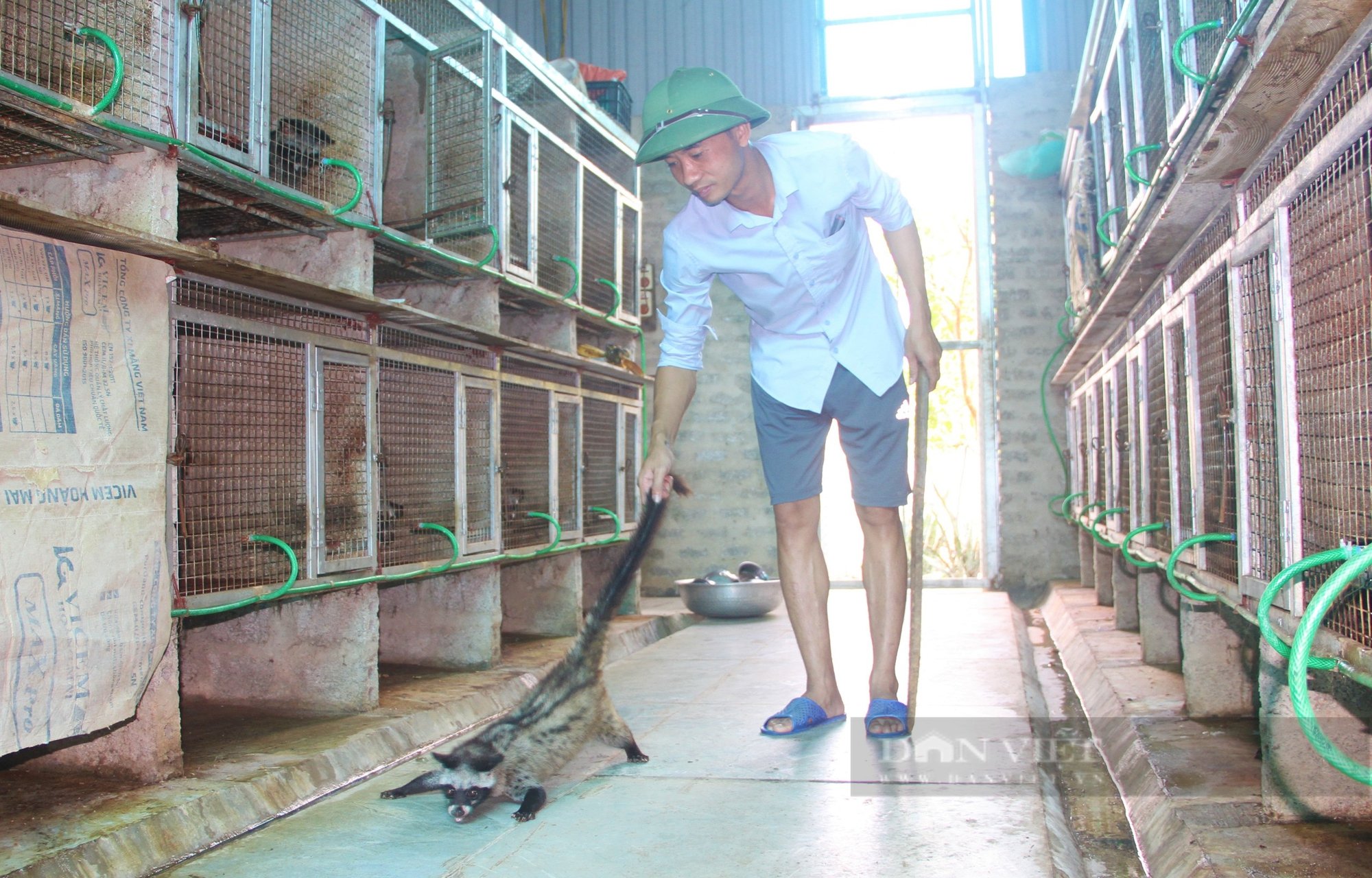
Vu Van Cu's civet breeding farm in Xuan Lam commune, Hung Nguyen district, Nghe An province is currently the largest in Nghe An province. The farm has 500 breeding civets. Photo: Ng.T
The construction engineer's "fate" with the civet farming model began during his time working in the southern provinces. At that time, Mr. Cu worked near civet farms so he did some research. Seeing that civets were easy to raise and suitable for the conditions in his hometown, he made a turning point decision.
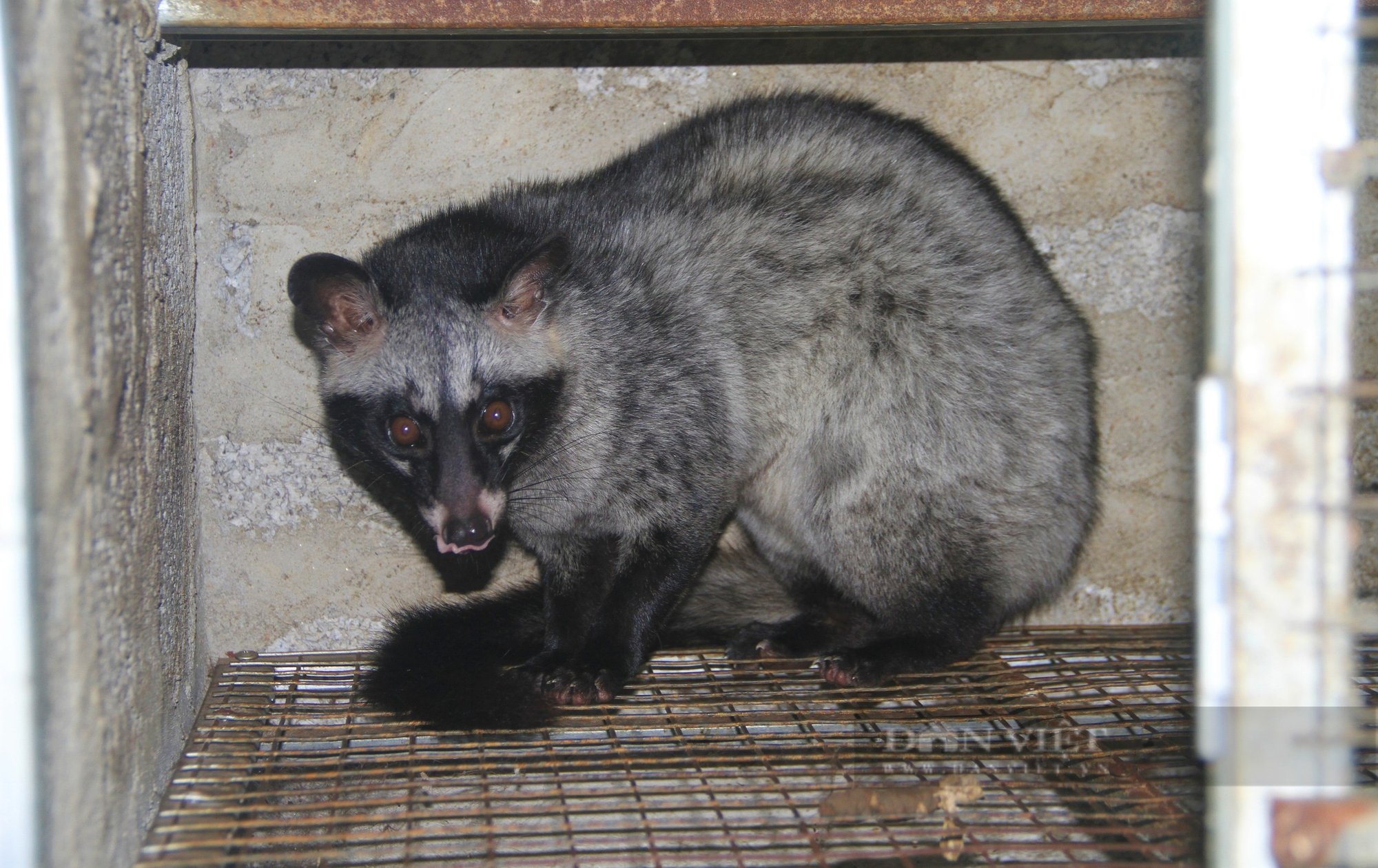
Civets are raised separately in small cages. Photo: Ng.T
In 2019, the construction engineer officially quit his job with a salary that thousands of people dream of to return to his hometown.
Initially, Mr. Cu built a barn and tested breeding of 5 pairs of civets. Although the scale was small, at that time he spent 325 million VND to build the barn and buy the breed.
Owner of the largest civet farm in Nghe An
While raising civets, Mr. Cu also works as a local construction contractor to have funds to maintain his life and develop the model.
"Raising civets is not too difficult. The cages do not require a large area of land and, importantly, do not pollute the environment, so they can be raised in residential areas. The cages I make for raising civets are in the form of iron cages 80cm high and 60cm wide.
The iron cage is arranged on a stand about 1 meter from the floor to keep it airy, avoid humidity and make it easy to clean the cage," Mr. Cu shared more about the technique of making a cage for raising civets.
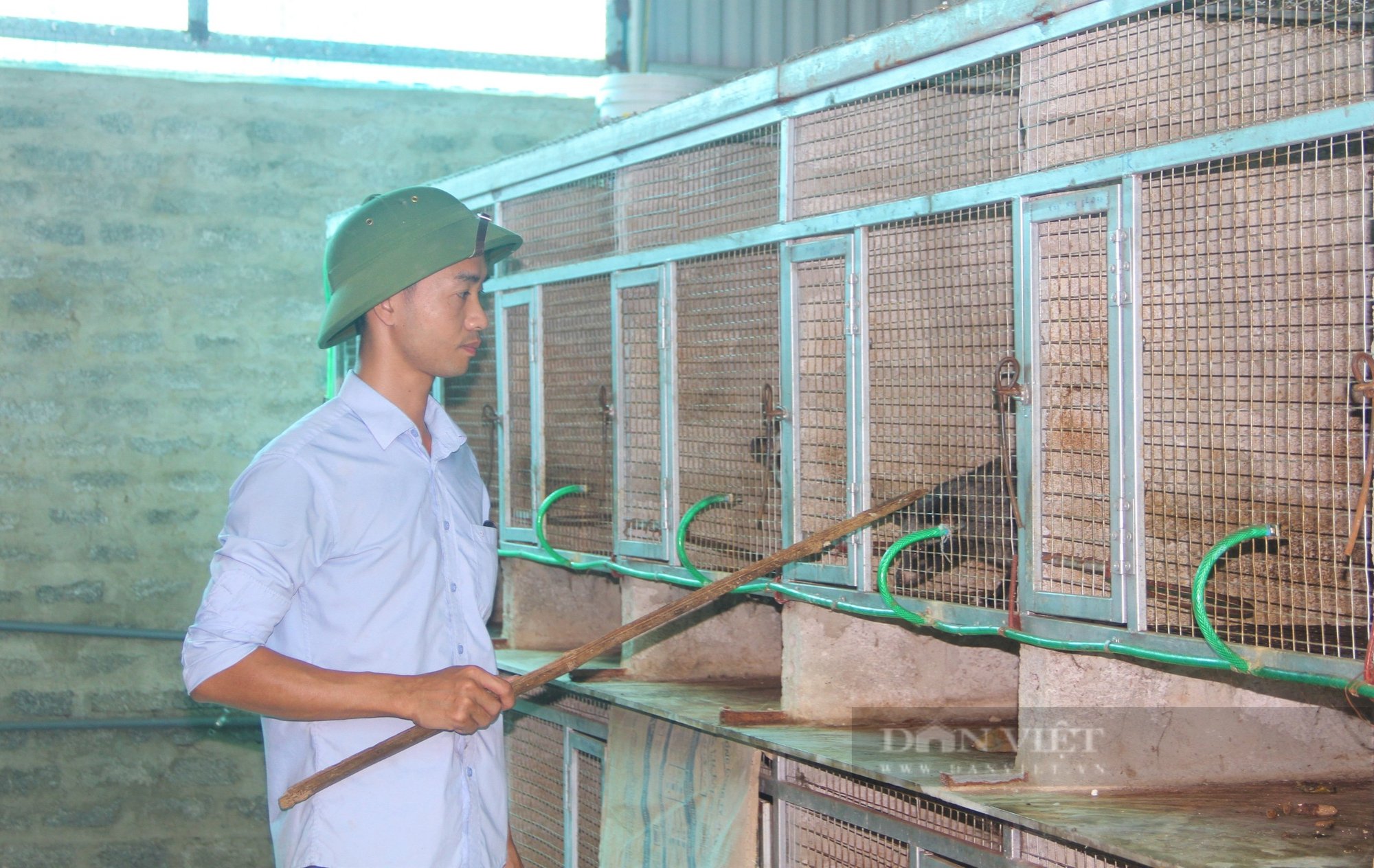
The civet cage was designed by Mr. Cu to be cool in the summer and warm in the winter. Civets are wild animals so they have quite good resistance. Photo: Ng.T
The cage is equipped with a thermometer, ceiling fan, ventilation fan and cooling system. The mink cage is always cool in summer and warm in winter.
In addition, Mr. Cu divides the cages into separate areas: an area for raising individuals, an area for raising married civets, an area for raising newborn civets... Depending on the stage of development, civets will be raised in cages at a ratio of 1-2 or more civets.
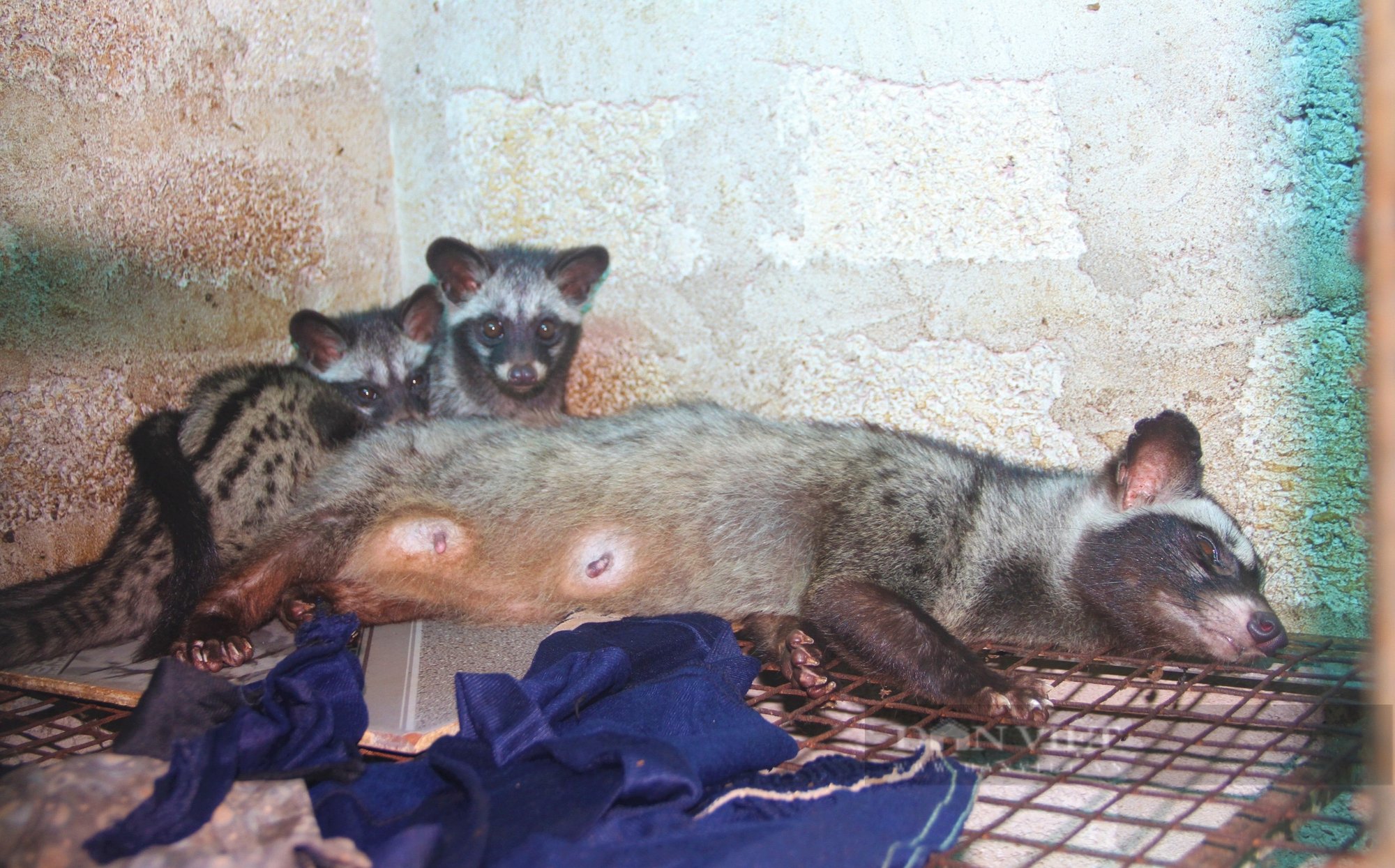
At Mr. Cu's specialty breeding farm in Xuan Lam commune, Hung Nguyen district, Nghe An province, there are 500 civets breeding. Civets give birth to two litters a year. Each litter, the mother civet gives birth to from 3 to 6 civets. Photo: NT
Mr. Cu said: "The most important thing in raising civets is that the cage system must always be clean. The person taking care of the civets must understand the characteristics of the species, in order to have appropriate care. After 5 years of raising them, the civets are healthy and reproduce well," said Mr. Duc.
To limit the possibility of the civets getting sick, Mr. Cu also filters the drinking water through the system.
After that, Mr. Cu installed a faucet to automatically flow water in each cage. The civet's food is mainly ripe bananas, river fish, shrimp, field crabs, and fertilized chicken eggs. The main food is fish porridge and chicken wing porridge. They are fed one main meal a day in the afternoon.
Mr. Cu said that on average, the cost of food for civets per day is about 2,000 to 3,000 VND/civet.
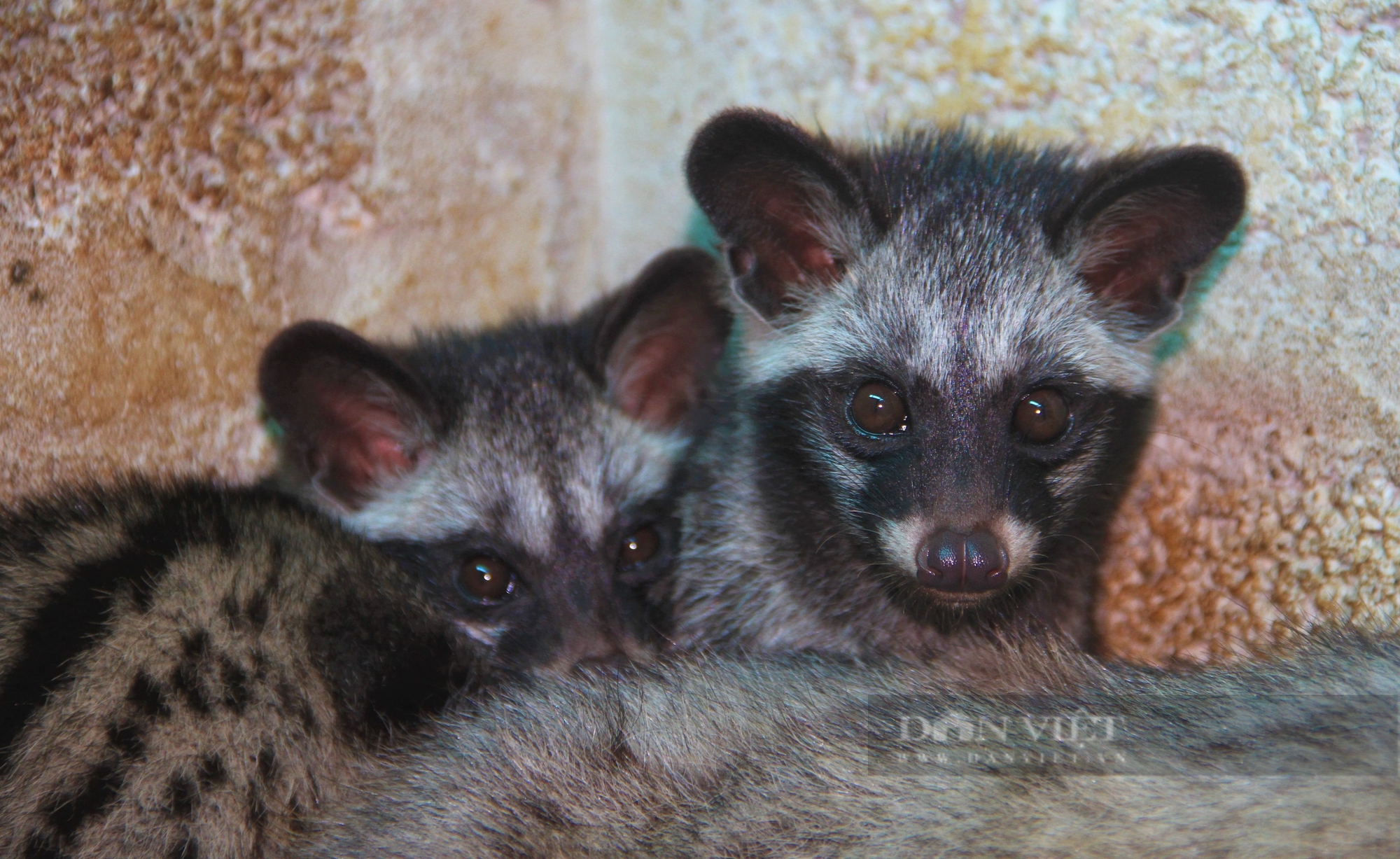
The breeding civets are sold by Mr. Cu for about 14 million VND/pair. As they are wild animals, when raising civets, breeders must comply with the provisions of the law and instructions from the authorities. Photo: Ng.T
Each year, a mother civet can give birth to 2 litters, each litter has from 3 to 6 babies. Breeding civets are raised for 4 to 5 months and are sold at a price of 14 million VND/pair. Commercial civets cost from 1.5 to 1.9 million VND/kg, depending on weight.
The initial civet pairs grew well. From there, Mr. Cu began to expand his model. Currently, Mr. Cu has 2 breeding farms in Xuan Lam and Nghi Kieu, Nghi Loc district with a scale of 500 breeding civets. They are mainly bred to sell the offspring to the market.
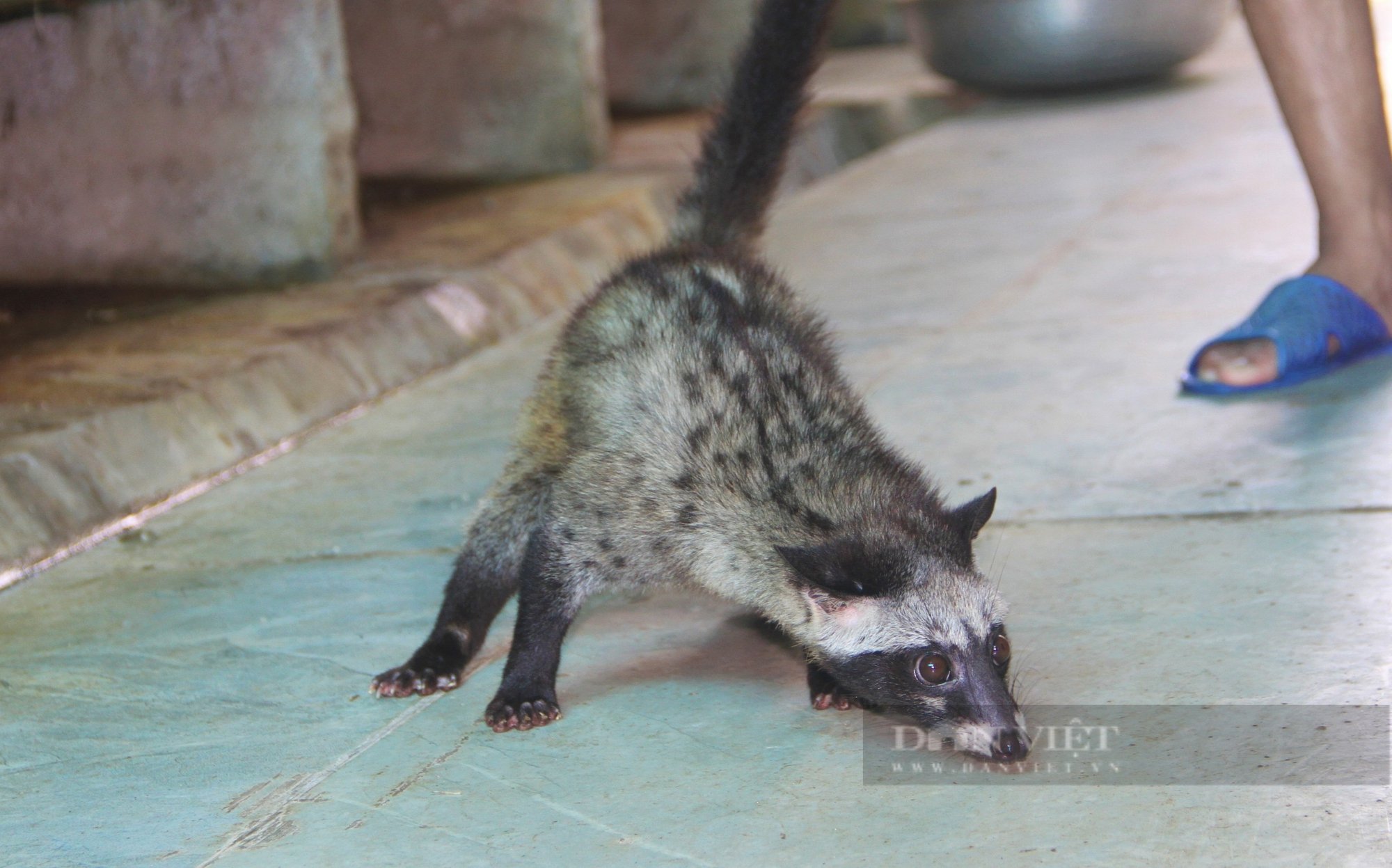
Mr. Cu in Xuan Lam commune, Hung Nguyen district, Nghe An province said: Currently, the market demand for civet cats and commercial civet cats is very high. Commercial farming of this wild animal brings high economic efficiency. Photo: Ng.T
"Currently, the demand for commercial civets and civet breeds is very high. Sometimes there is not enough stock to supply the market," Mr. Cu shared.
In the past, Mr. Cu has provided breeds and enthusiastically provided technical guidance to many farmers across the country to replicate the model. Many people have come to his farm to learn about his experience and techniques in raising civets.
Source: https://danviet.vn/ky-su-bo-luong-25-trieu-ve-que-nghe-an-nuoi-chon-huong-con-dong-vat-hoang-da-ban-14-trieu-cap-20241011172208212.htm















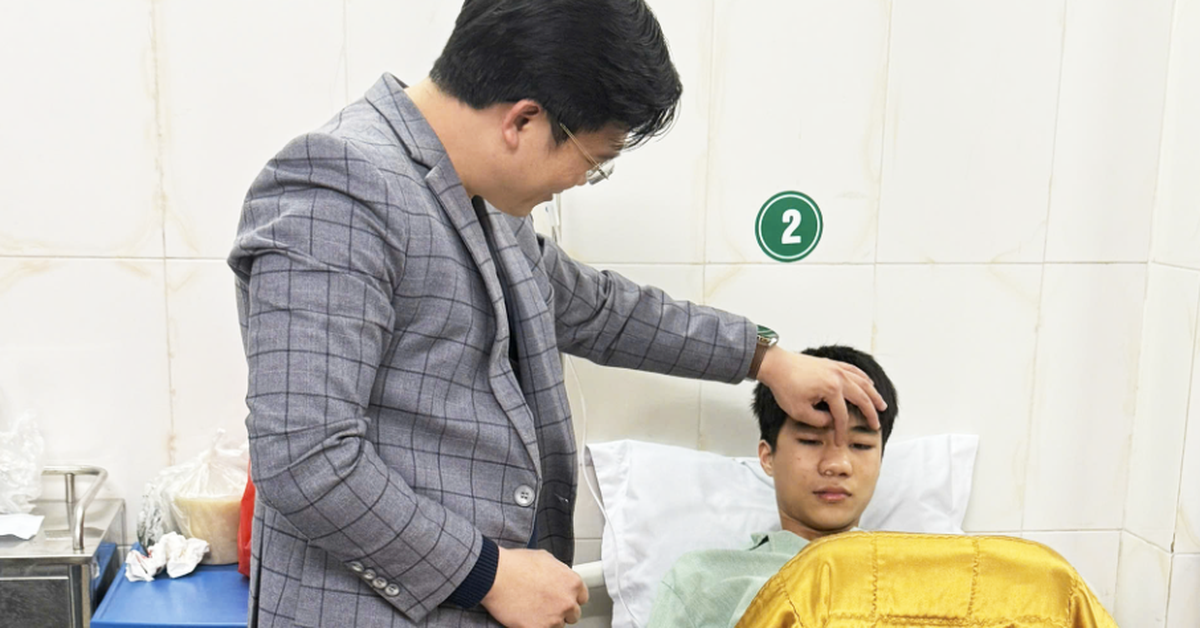
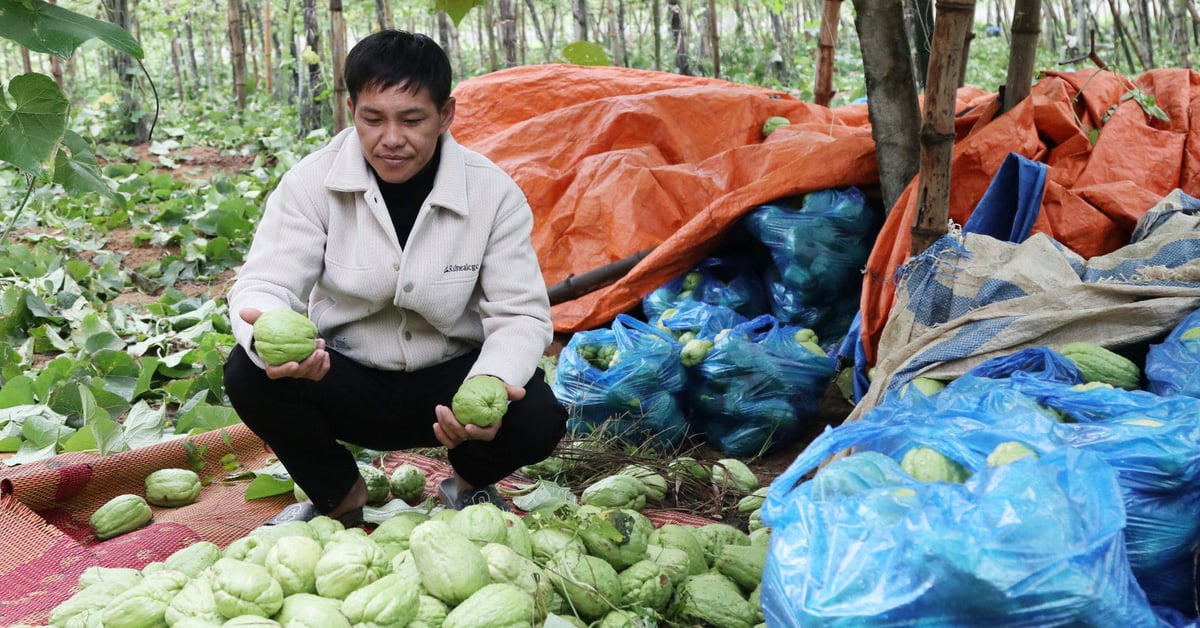

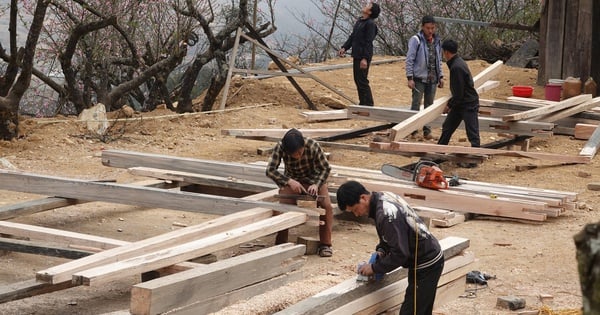
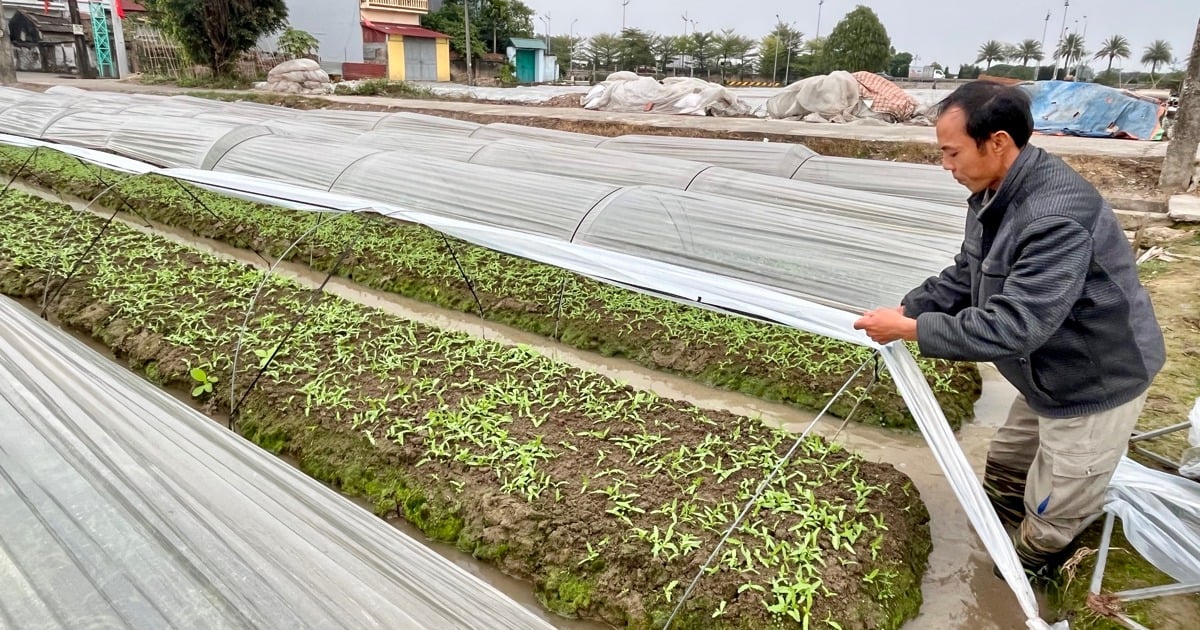

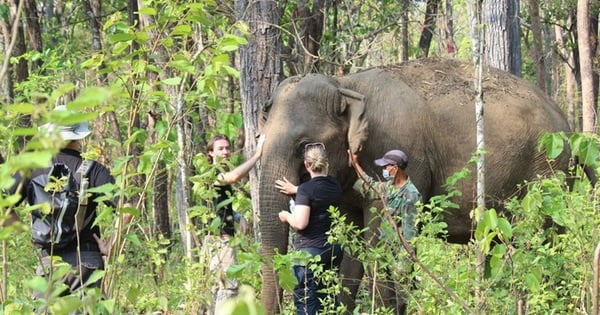
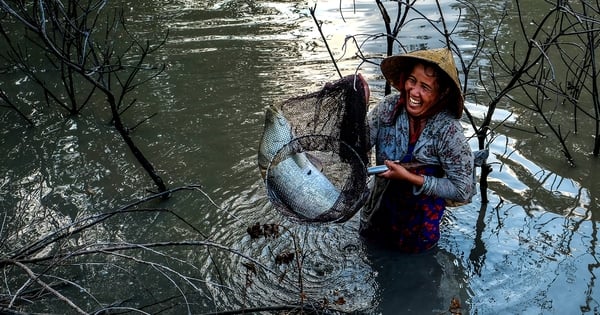





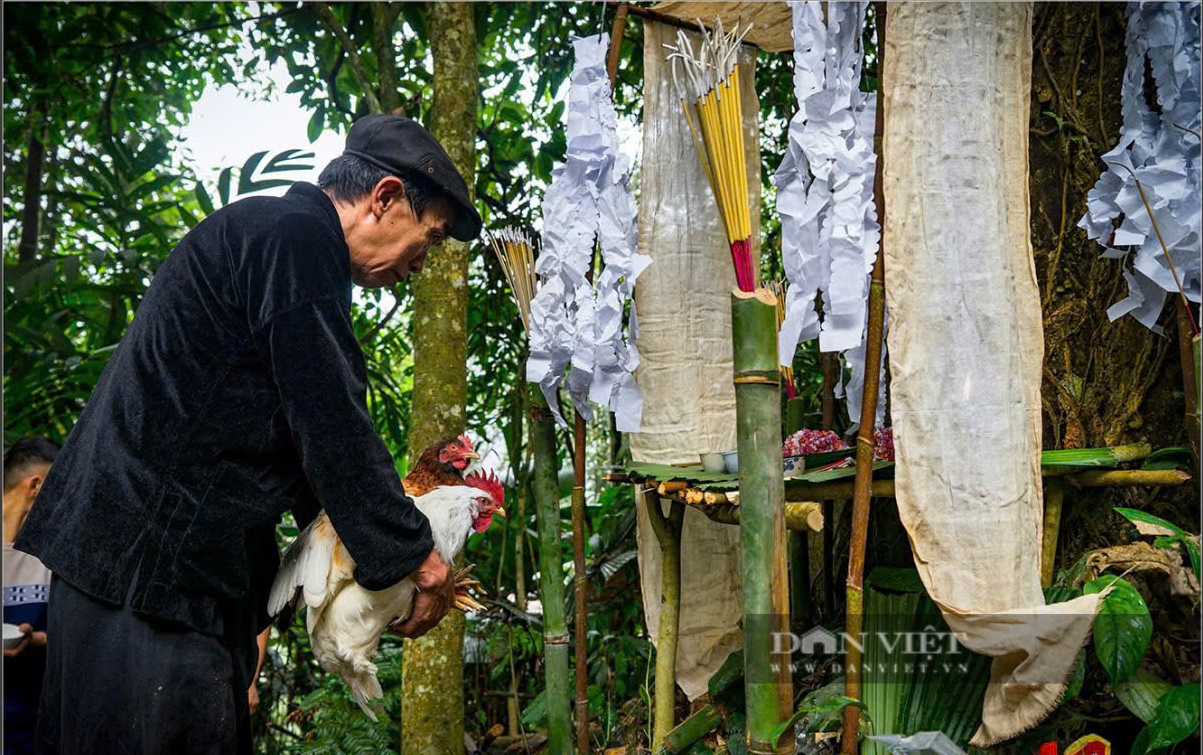
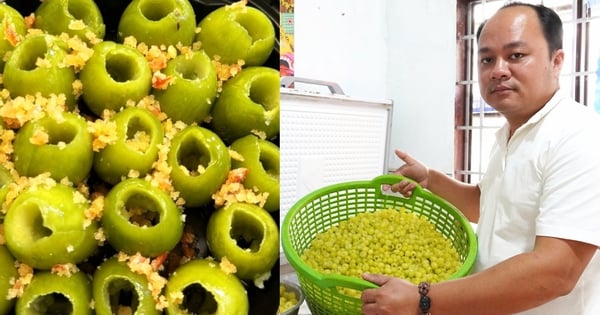

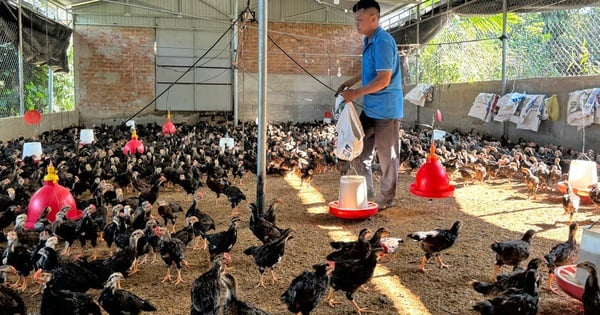






![[Photo] Prime Minister Pham Minh Chinh chairs Government Conference with localities on economic growth](https://vstatic.vietnam.vn/vietnam/resource/IMAGE/2025/2/21/f34583484f2643a2a2b72168a0d64baa)




























































Comment (0)